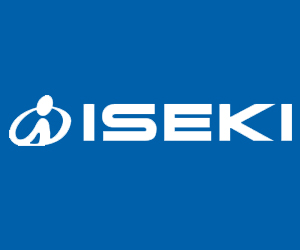Revolutionising turf protection with Maxtima®
Revolutionising turf protection with Maxtima®: Global pioneers in the world of turf care research and development, BASF is the expert brand in product innovation and turf management solutions, and its latest fungicide is a must-have in all greenkeepers tool kit.
Following the anticipated launch at BTME 2024, BASF’s new cutting-edge demethylation inhibitor (DMI) fungicide, Maxtima® is already making its mark in the world of turf care. The innovative product is a cost-effective solution against the toughest of diseases such as dollar spot and microdochium that can be applied throughout the year for long-term protection. Here, we look at the regulations that contributed to its development, how the product was created, and, specifically, its active substance, Mefentrifluconazole.

Revolutionising turf protection with Maxtima®
Matthew Martin, Strategic Key Account Manager at BASF said: “The need for fast-acting and long-term turf disease management has been key in the development of Maxtima®, and the revolutionary DMI fungicide has delivered just that! Its efficacy on tough and recurring pathogens means that long-term protection and prevention is achievable for all green keepers. What’s more is Maxtima® boasts a low application rate, minimising chemical usage on greens, and saving turf professionals time, labour, and money.”
The unique active substance of Maxtima®, Mefentrifluconazole, is absorbed rapidly into the leaf, where it is protected from degradation from rain and UV. It then settles as a pool, which provides slow release of the active for long term protection – up to 28 days. Unlike older DMIs in the market, Maxtima® fungicide is an isopropanol-azoles, a unique chemistry that ensures excellent binding capacity and adaptability through its molecule flexibility. This offers control even on plant pathogen strains that are insensitive to DMIs – something many other DMIs cannot offer or compete with.
They say necessity is the mother of innovation and you could argue it’s never been more necessary to bring new fungicide chemistry to growers. But perhaps the true innovation behind Mefentrifluconazole, the first new azole to reach the UK market for 15 years, has been the approach BASF has taken in the face of the tough EU regulatory regime.
On the development of, and need for, a unique DMI, Rob Gladwin, head of technical management for UK said: “The quest for new chemistry in turf disease control started many years ago. The efficacy of current chemistry was shifting and there was great uncertainty over its future with more stringent EU regulations being enforced. For azoles, like Mefentrifluconazole, there is the backdrop of concerns over endocrine disruption, as the target enzymes in fungal pathogens are closely related to those found in mammals. We addressed this head on. Our research teams looked not just to target enzymes in the fungal pathogens, but also specifically for chemistry that does not harm wildlife”.
The discovery came with the development by the biochemistry team of new enzyme assays.
“The assays test the efficacy with which the DMI chemistry, which includes azoles, inhibit the fungal target site, CYP51 –– blocking this enzyme prevents a fungal cell from producing ergosterol causing it to die.
“We also found that Mefentrifluconazole is flexible –– it not only fits perfectly into the CYP51 binding site, but it also has the flexibility to adapt if this site changes, unlike other azoles. We think that helps with the control of septoria isolates that have evolved mutations. DMIs have a mode of action which is inherently interesting. But the approach we took has taken our work in a new direction and has become the standard way we start the process of new active ingredient development.
“The team screened hundreds of compounds and received very quick feedback, not just on how effective they were, but also how safe. Together, the team discovered a unique property of an entirely new family of triazoles –– this molecule has a ‘hook’. It’s an isopropanol linker. This moiety is a small part of the larger molecule and it’s unique for a DMI. We synthesised it and noticed very strong fungicidal effects.
“We do everything we can to put forward the right molecules into our development pipeline, so we don’t have problems later, but we see so many that fail. It makes it even more rewarding when you find one that succeeds, like we have seen with the active in Maxtima®.
Maxtima® was launched in collaboration with Agrovista Amenity, the industry’s leading supplier of professional products and specialist advice. Turf professionals will be able to speak to their local Agrovista representative to order the product and for more detail on its usage and compatibility.
For more information, please visit https://www.agricentre.basf.co.uk/en/Products/Product-Search/Fungicides/Maxtima.html#section-details
For the latest industry news visit turfmatters.co.uk/news
Get all of the big headlines, pictures, opinions and videos on stories that matter to you.
Follow us on Twitter and Instagram for fun, fresh and engaging content.
You can also find us on Facebook for more of your must-see news, features, videos and pictures from Turf Matters.











